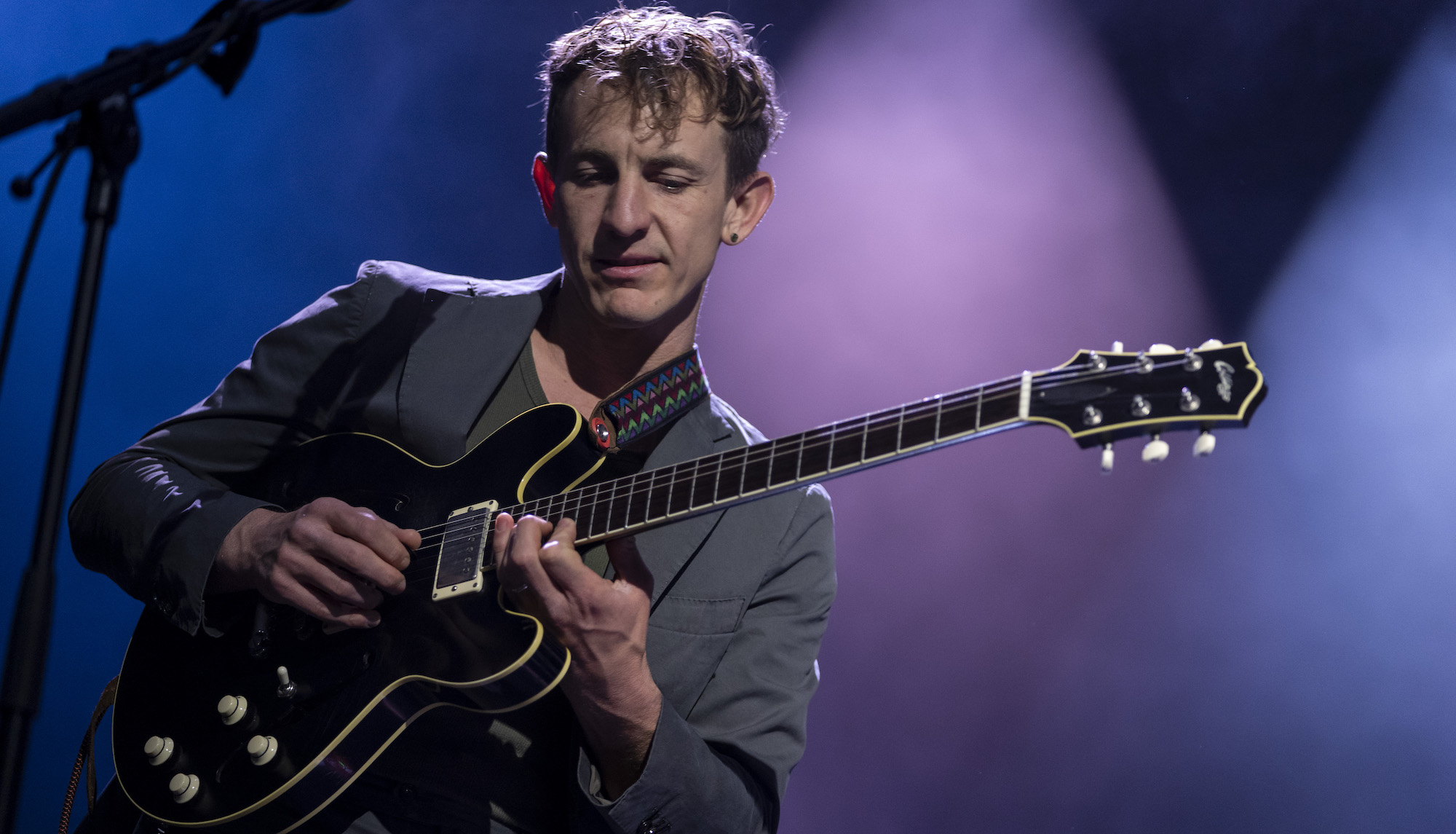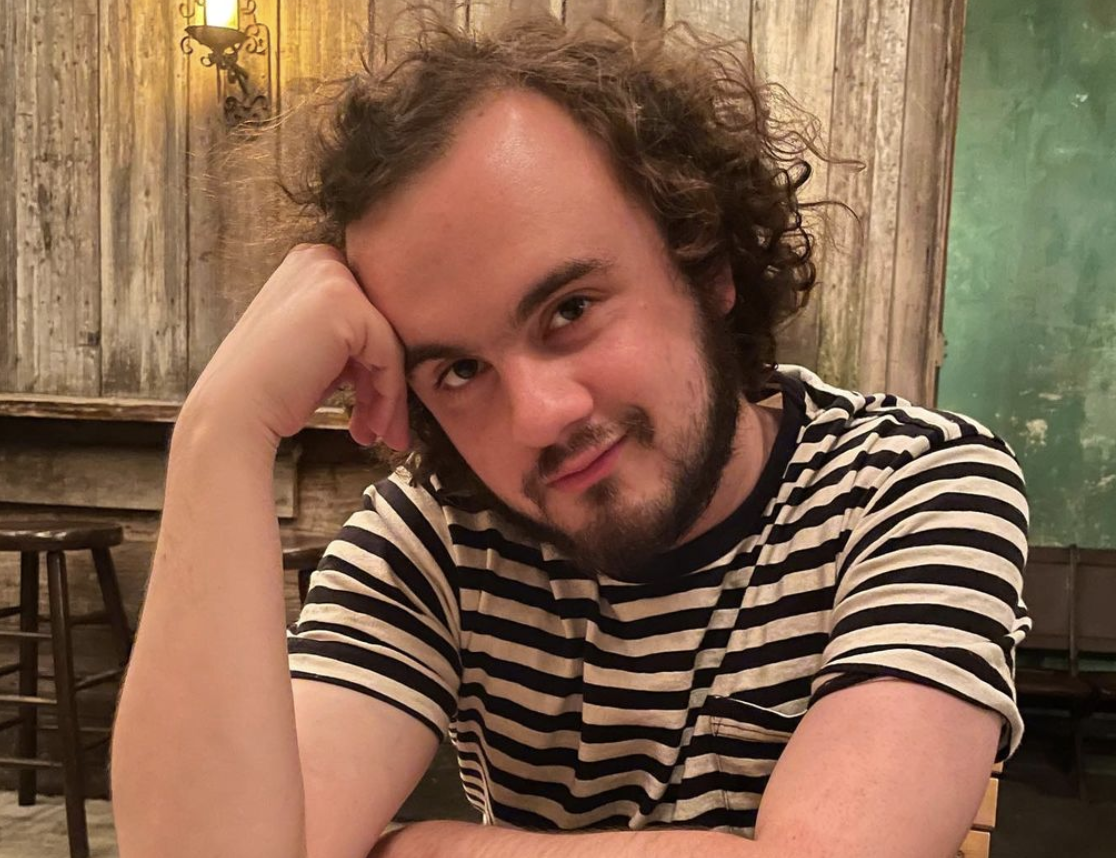“Django Reinhardt was our god – I played a Selmer Maccaferri-style guitar, grew a mustache, wore a suit... the whole thing”: Big Thief’s Buck Meek names 10 guitarists who shaped his sound
The understated indie guitar hero is well-versed in blues and jazz tradition, but also takes inspiration from Marc Ribot, Connie Converse... and The Shaggs’ Dorothy “Dot” Wiggin

Big Thief's rise from critical darlings to Grammy-nominated alt-rock elites over the past few years has been meteoric, but it hasn't tempered the band's restless experimentalism one bit.
If anything, the band's most recent full-length – the sprawling, 80-minute Dragon New Warm Mountain I Believe in You – found their sound twisting and turning into fascinating new directions, all unified by the unique guitar interplay of Adrianne Lenker and Buck Meek.
Though Lenker is the band's primary songwriter, and takes her share of ripping solos, she often works her parts around Meek's in a way Keith Richards would describe as “weaving.”
The Berklee-trained Meek, for his part, brings a dizzyingly eclectic musical vocabulary to the guitar, but his central philosophy – whether put into action with Big Thief or in his solo work – is that a song's melody is its “north star,” and that all guitar parts should be in service to it.
Meek recently took the time to share his biggest guitar influences with GW – from teachers to bandmates to a guitarist whose playing Meek describes as if “Elliott Smith and Bach started a supergroup with Charles Ives, The Shaggs, Porches, Simon & Garfunkel, The Beatles, Connie Converse, and Yngwie Malmsteen”...
1. Brandon Gist
“Brandon is a real-deal blues player from Memphis who took me under his wing when I was 15. He gave me my first gig ever, at the Woodcreek Tavern in Wimberley, Texas. I played rhythm for him for a while, but he encouraged me to start taking solos pretty early on. He'd teach me an Albert King lick in the afternoon and then tell me to play it that night at the bar.
“One of my jobs was to kick his silverface Twin Reverb when it would short out – he'd be in the middle of a solo and it would start sputtering, he'd turn around and yell 'kick my amp' and keep ripping until I got it alive again. Brandon is the genuine article, and plays regularly in Austin and around the Texas Hill Country.”
Get The Pick Newsletter
All the latest guitar news, interviews, lessons, reviews, deals and more, direct to your inbox!
2. Django Porter
“Django's father, Price Porter, is a great pedal steel player in the Texas country scene, and named his son Django after Django Reinhardt. Django Porter went on to master the manouche jazz style himself, as well as steeping himself in Texas swing, bebop, flamenco, Romanian waltzes, Indian and Pakistani music, and players like Michael Hedges and Tim Buckley.
“Django was my music teacher Katherine Anne Porter High School in Wimberley, Texas, and I quickly became his protege – first backing him up with the La Pompe rhythm style of the Quintette du Hot Club de France, and eventually trading solos with him on songs by Taraf de Haidouks, Stochelo Rosenberg, Jimmy Rosenberg, Angelo Debarre, and Bireli Lagrene, playing gigs around Texas at dance halls and bars. I owe a lot to Django.”
3. Django Reinhardt
“Django Reinhardt was our god. I transcribed dozens of his solos, emulated his right hand, La Pompe and floating picking styles, his left-hand linear runs (which he developed to compensate for only having two working fingers on his fretting hand), and every 6th and minor 6th and diminished and flat 9/13 inversion.
“I learned as many of his original melodies as I could, built a library of his II-V-I licks and his various turnarounds, and transcribed them to every key and position, wrote songs in his style, played a Selmer Maccaferri-style oval hole Dupont MD50 guitar, grew a mustache, wore a suit... the whole thing.”
4. Jolie Holland
“Jolie has been one of my songwriting heroes since I first heard her song Sascha when I was 15. The weight and swell with which she backs herself up on guitar is hypnotic – she holds the power of an entire rhythm section in her right hand. Listen to her guitar melodies on songs like December, 1999, from the album Catalpa.”
5. Mikey Buishas
“Mikey was my roommate and best friend at Berklee. He was studying jazz composition at the time, but also taking film photos, making movies, quilts, ceramics and collages, painting, baking bread, playing mbira, rebuilding pianos, growing tomatoes... and writing the most beautiful rock 'n' roll I'd ever heard in his bedroom.
“After school, we lived in NYC together and had a surf-punk band called Pencil with Adrianne Lenker – all the while he was writing incredible music under the names Really Big Pinecone, .Michael, and 0 Stars.
“No-one plays guitar like Mikey Buishas, but if I had to explain it for guitar kids, I'd say it sounds like Elliott Smith and Bach started a supergroup with Charles Ives, The Shaggs, Porches, Simon & Garfunkel, The Beatles, Connie Converse, and Yngwie Malmsteen.”
6. Adrianne Lenker
“Adrianne's songs are so unbelievably strong inherently, and her guitar parts are often already so melodic and complex, it's a humbling task to write an accompanying guitar part for them. Often the best way I've found to support them is to play something simple, with ambience or a pedal or longer melody to bridge all of the movement, or to harmonize her melody, or use it as a jumping off point for a line.
“She writes with a lot of odd time signatures, polyrhythms and open tunings, which lead to a lot of harmonic tensions, so there's so much to work with and support. This has forced me to use every tool I have while also challenging all of my biases and instincts as a player.”
7. Adam Brisbin
“Adam Brisbin plays in probably 50 bands in NYC – he's my tone hero, and he plays beautiful melodies at all times. His playing is graceful and finessed, but also wild, unobtrusive, and respectful to the song while somehow also sounding muscular and ferocious, but still sensitive at the same time.
“He can go from a subtle Carl Kress-style chord melody to a fiery, '60's-style passage to a blown-out noise drone in a matter of seconds. I feel very lucky to have played with him for 10 years, and that he's played on all three of my solo records.”
8. Connie Converse
“I love how Connie harmonzes her vocal melodies with chord melodies on guitar. I see the melody of a song as the north star – all guitar parts should be in service to the melody, whether they mirror it, harmonize, or support it rhythmically. She has always been an inspiration for how to achieve that.”
9. Dorothy "Dot" Wiggin
“Dorothy from The Shaggs always mirrors the melody, but in liquid time – sometimes a whole bar later, sometimes right on it. I love that you can always count on this with their music. It puts me in a trance hearing the syncopation between the sung melody and the slightly bent guitar double.”
10. Marc Ribot
“Marc is another guitarist who can transition seamlessly from subtle grace and precision to cathartic frenzy in an instant. It feels like he has so much music inside of him, in so many different shapes and sizes – it boils over and ignites when he picks up a guitar.
“I read a Tom Waits interview as a kid where he talked about how Marc puts himself into a trance when he plays. That idea had a big impact on me – the pursuit of accessing your subconscious and your raw instincts instead of casting a projected image.”
- Buck Meek tours the United States in January and February 2024. Visit his website for tickets and info.
Jackson is an Associate Editor at GuitarWorld.com. He’s been writing and editing stories about new gear, technique and guitar-driven music both old and new since 2014, and has also written extensively on the same topics for Guitar Player. Elsewhere, his album reviews and essays have appeared in Louder and Unrecorded. Though open to music of all kinds, his greatest love has always been indie, and everything that falls under its massive umbrella. To that end, you can find him on Twitter crowing about whatever great new guitar band you need to drop everything to hear right now.
Guitar World Discussion: Who is the most underrated guitar player of all time?
Ozzy Osbourne’s solo band has long been a proving ground for metal’s most outstanding players. From Randy Rhoads to Zakk Wylde, via Brad Gillis and Gus G, here are all the players – and nearly players – in the Osbourne saga











